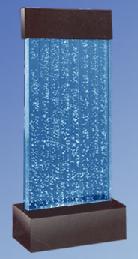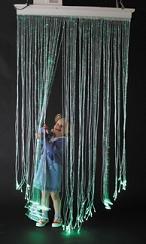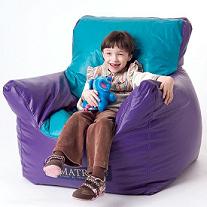Blog Roll: (Contributors)
» Hulet Smith, OT
» Megan Smith, PT
» Mike Price, OT
Topics:
Adaptive Devices
Adult Tricycles
Air Purifier
Allergy
Alternative Communication Devices
Alzheimer's Dementia Products
Aquatic Products
Arthritis Relief Products
Autism
Back Relief
Ball Pit/Pool
Bariatric
Bath Benches
Bathtub Lift
Bed Rails
Bedsores / Decubitus
Bidet
Body Solid Exercise Products
Breast Feeding Products
Bushel Trucks
Cancer
Catheters
CEU
Changing Bench
Child Car Seats
Child Care Products
Christmas Gifts
Clinic/Medical Equipment
Clinical Furniture
Cold and Flu
Communication Devices
Compression Garments
Computer Products
CPAP
Crutches
Daily Assistance Products
Daylight Lamps
Dental Care
Diabetes
Doctor's Office
Dysphagia
Electrodes
Electrolarynx
Emergency Preparedness
Ergonomic Equipment
Exam Tables
Exercise Products
Eyecare
Family Tricycles
First Aid Kits
Floor Scales
Fluidotherapy
Foot Drop
Foul Weather Gear
Furniture
Gait Trainers
General Articles
General Posts
Glassless Mirrors
Hand Sanitizer
Head Protection Helmets
Hearing Impaired
Heart Health
Heating Pad
Hip Fractures
Home Assistance Products
Home/Office Assistance
Hospital Beds
Hoyer Lifts
Hyperbaric chamber
Hyperthermia/Hypothermia
Ice/Hydration Carts
Impotence Products
Incontinence Products
Infection Control Gowns
Inspirational Stories
Lift Chairs
Light Therapy
Low Vision Products
Massage Tables & Chairs
Massage Units
Maternity
Medical Facility Products
Medical Scales
Multi-Sensory Environment
Natural Healing
Nebulizers
Non-Hospital Bedding
Nutritional Supplements
Office Furniture
One-Handed Products
Operating Room Devices
Ostomy Products
Oxygen Compressors
Oxygen Concentrator
Oxygen/Nebulizer Masks
Pain Relief
Paraffin Unit
Patient Lift
Patient Lifts
Patient Restraints
Patient Transfer Systems
Pediatric Bath Chairs
Pediatric Furniture
Pediatric Learning
Pediatric Recreation
Personal Listening Devices
Personal Warming Products
Physical Therapy
Pill Organizers
Pillows
Playground Equipment
Pool Lifts
Press Releases
Procedure Chairs
Pulse Oximeter
Reading Assistance
Reference Materials
Rehab Equipment
Rehabmart News
Rehabmart Newsletter
Respiratory Health
Rollators
Saunas
Scooters
Seniors
Shower Chairs
Shower Commode Chairs
Shower Gurney
Showers Chairs
Side Access Bathtubs
Skin Tear
Special Needs Dinnerware
Special Needs Seating
Special Report Articles
Splints
Sport Injuries
Standers
Staying Home
Stethoscopes
Stimulus Reward Toys
Stress Relief
Stroke
Strollers
Summertime Products and Summertime Fun
Talking Products
Therapy Balls
TheraTogs
Thermometers
Traction Devices & Tables
Treatment Tables
Ultrasound
Vibroacoustic Therapy
Vision Products
Walk-In Bathtub
Walking Aids
Walking Boot
Weighted Wearables
Wheelchair Accessories
Wheelchair Cushions
Wheelchair Lifts
Wheelchair Ramps
Wheelchair Transfer Systems
Wheelchairs
Women's Health
Work Hardening Products
Wound Care
What is a Multi-Sensory Environment?
By drawing in the patients' focus through their senses these rooms offer several different experiences and responses. By gaining the individuals' response to their environment through this focus, behavior and attention can be adapted over time. Depending on the specific need, the patient may be encouraged to simply relax and enjoy the sensation of security, while another may be taught to play and touch everything. Each time this therapy is used, a different experience can be created through guided interaction with its contents. This is not to be confused with a simple play-room. These are fully controlled environments that target specific senses for these therapeutic responses.
For example, in order to stimulate the visual sense a MSE may contain fiber optic lights and bubble tubes with sheets of cascading colored light that is reflected throughout the room. They may have curtains of these fiber optics that encourage touch, with soft and safe strands that can be programmed to change color on command. Some of these fiber optics actually respond to the touch, and some are operated by a switch. Projectors are a common addition to cast light through special effect wheels, creating ever changing patterns that mesmerize and soothe. Both the child and the geriatric patient can enjoy watching the play of light for hours, and be either calmed or focused by it. Bubble walls and bubble blowing fans are also great ways of capturing the attention and incorporating touch.
The introduction of a pleasing scent into the room, also known as aromatherapy, can be a rewarding stimulation with switch operated fans. Sensory fountains that create a soft mist through ultrasonic vibration can work with essential oils to bring a gentle cloud-like vapor that pours from a small bowl. Devices of this nature should be used with caution due to their construction of glass and electrical components. Always choose the scents carefully, and avoid anything "too strong" or overwhelming. Because essential oils are easily absorbed into the skin, direct contact with them without dilution is not advised.
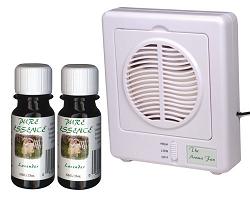
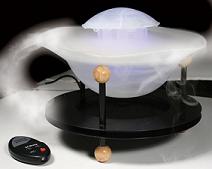
Tactile sensation is often addressed in these rooms through interesting or unusual textures. You may have seen "squishy balls" that are filled with gel or covered with soft nubs, as well as soft spiky balls with long stretchable fingers. Vibrating chairs, cushions or toys promote a feeling of massage and relaxation as well. Hairbrushes that are designed to stimulate the scalp may be used, along with soma acoustic pillows that combine both vibration and sound. Walls can be covered with textured panels in these rooms, to both protect and delight.
Three-dimensional spaces inside a MSE like tunnels, tents, corners and tubs can be used to "hide" in and promote security. They can also give shelter from sound and light, further relaxing the user. Crawl tubes and tunnels may offer an extra reward of accomplishment and sensory deprivation. These are often soft, padded, lightweight units that can be easily moved and adapted for the patient. Ball pools are a fun way to introduce tactile stimulation through play. Some pools include lighting, vibration and sound, further increasing awareness of the occupant. Weighted items like scarves and blankets have also been used to calm and heighten focus through propioceptive feedback and stability.
Rehabmart carries a wide range of these products that can be combined into a Multi-Sensory Environment such as :
Denise Kelly, Medical Consumer Writer
and
Hulet Smith, OT
Rehabmart Team Leader & CEO

